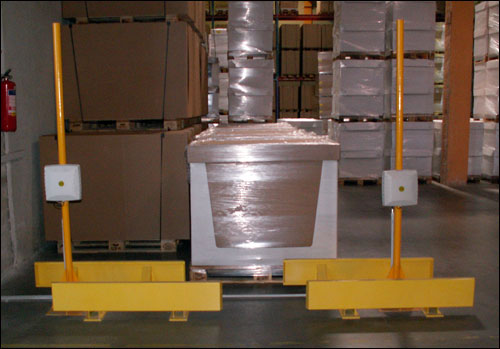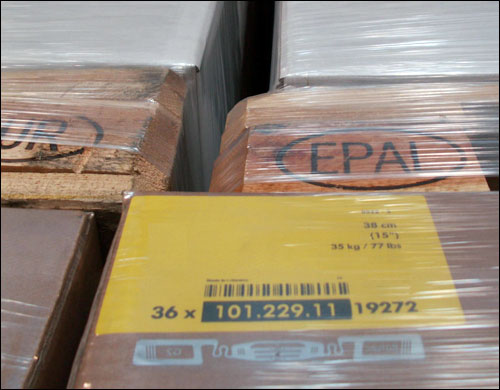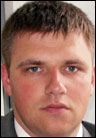Feb 24, 2010Artilux NMF, a Lithuanian and Swedish joint venture that manufactures lighting fixtures and lamps, is employing EPC RFID technology to track the movement of pallets loaded with products or raw materials at its 11,000-square-meter (118,000-square-foot) facility in Šiauliai, Lithuania. The system was provided and installed by Lithuanian automation and telecommunication systems integrator UAB Autepra, using RFID tags from UPM Raflatac on pallets loaded with its products, and reusable tags from Omnia Technologies for raw materials. The software, provided by Sprendimu idejos, integrates with the company's existing Microsoft Dynamics NAV ERP system.
Artilux NMF produces approximately 6 million decorative lamps and lighting fixtures each year, which are shipped on 25,000 pallets. Most are sent to distributors throughout Europe that, in turn, forward the lamps to retailers that sell lighting products. In the past, pallet tracking was performed with a system that combined the use of printed labels and paperwork, and bar-code labels on boxes and pallets.
As manufactured lamps and fixtures came off the production line, they were stacked on pallets, and a red sheet of paper was placed on top. Quality-control workers would walk among the pallets, examine the products, ensure that they were complete and ready to be sent to the warehouse, and then remove the red paper to indicate that pallet had passed quality control. Employees would input data regarding the pallet's load in the company's ERP system, and staff members picking up items would then need to use bar-code scanners to scan the ID number encoded to each item's bar-code label, to record which products were loaded on the pallet or inside the box.
The system was prone to mistakes, however, with workers not always clearly or correctly indicating whether a pallet had passed quality control, or had been shipped, or if the proper pallet was being shipped at the correct time, and to the right location. Errors could be made in a multitude of ways—an item or pallet bar-code label might have been scanned, a red sheet of paper could have been placed on the wrong item (or simply be missing), and there would be no record of a pallet being inspected or moved to the warehouse.
When it came to raw materials, there were similar problems. Items such as wires and plastic components for lamp assembly arrived at the facility, then were loaded on pallets and stored in the warehouse. Bar-code labels encoded with a serial number on the pallets were scanned using a bar-code reader, to indicate the materials had been received and when they went to production, in order to update the system as to the materials' status. But workers sometimes failed to scan the labels when they were supposed to, so the company lacked a clear, accurate understanding of which materials were available in the warehouse, or whether they had already been used. Bar-code scanning was also time-consuming, because it required warehouse employees to get off their forklifts to scan each pallet's label.
The RFID system was designed to reduce errors and increase efficiency, says Tomas Girdzevicius, the director of UAB Autepra. The company was one of the first in the country to look into RFID, so there was little experience to draw upon, according to Artilux NMF's managing director, Aidas Šetikas. For that reason, the company deployed the system in measured steps, installing software and readers and applying tags in three phases, after confirming that each phase was successful.

Initially, in January 2009, Artilux focused on tracking pallets of finished product after they came off the finish line and were moved into the warehouse. With the new system, the quality-control staff examines each item. The production workers then enter information into the ERP application regarding the items being loaded onto the pallet, use a Zebra Technologies RZ400 printer to encode and print an ID number on a label with a UPM ShortDipole UHF Gen 2 tag, attach the tag affixed to one of the boxes on the pallet and read it with a handheld interrogator with a Bluetooth connection to a PC.
The pallet is then transported through a fixed RFID portal (gate) at the warehouse entrance, provided by CAEN RFID, which again captures the pallet tag's ID number and sends that information to the back-end software via a cabled connection. The RFID software updates that pallet's status, indicating the goods have been moved into storage. Staff members can then access the ERP application to determine which items are being stored in the warehouse, along with their history, such as the dates they were manufactured and stored.
For phase 2, deployed in mid-2009, Artilux added an RFID gate at the loading dock through which the forklift drivers would carry a pallet scheduled for shipment. Each truck has an LXE VX8 vehicle-mounted computer that communicates with the company's back-end system via a Wi-Fi connection. As each pallet passes through the portal, the company's software matches its RFID number with the pending order and confirms that the pallet is correct, or sends an alert to the driver's computer screen indicating the pallet is incorrect, in which case he or she returns it to the warehouse.
In addition, the firm installed PCs with handheld readers at the end of each of its 11 assembly lines. When a pallet is loaded at the end of an assembly line, employees conduct an immediate inspection, read the tag attached to one of the boxes on that pallet, input data indicating the pallet has been inspected and loaded, and then send the pallet through the RFID portal and into the warehouse.
Artilux wanted RFID readers that would identify objects within a fairly short distance—2 to 3 meters (7 to 10 feet)—while not capturing stray reads of other pallets in the vicinity. "The main issue with RFID gates was the reading distance," Šetikas says. "The perfect reading is within 2 to 4 meters [7 to 13 feet], but gates also read RFID tags that are further—up to 7 or 8 meters [23 to 26 feet]." For that reason, the company had to adjust the antennas to ensure they did not read items that were not passing through the portals.
Since the system was installed, errors during product loading have been eliminated, Šetikas reports. The shipping process is now faster, he says, and the company has saved some space in the warehouse, since it no longer requires an area to check products as they are received from manufacturing.
"As a first project, it is a great success, and we are satisfied with the results achieved," Šetikas states.



